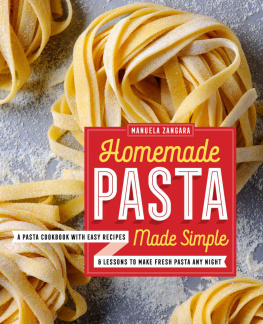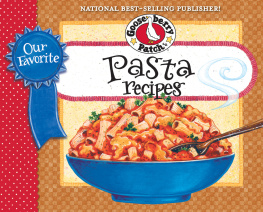Table of Contents
Guide
Photographs Erin Kunk el
FRESH P AS TA
COOKBOOK THE
CONTENTS About F r esh P asta Equipment Making the Dough P asta V ariations Recipes Basic Re cipes Index
Lasagna with Sage Leaves, Butternut Squash & Brow n Butter ()
ABOUT FRESH P AS TA F resh pasta is a corners tone of Italian cuisine, and cooks have been crafting it for centuriesmixing, kneading, and rolling out the dough b y hand, then cutting and shaping it according to custom and r egional pre ference. The hands-on appr oach is great for a leisur ely we ekend , but busy home cooks can take advantage of today s many shortcuts that make fresh pasta an option for w eeknight meals, too . In the W il liams Sonoma T e st Kitchen, we hav e made fre sh pasta using a variety of methods, each resulting in pasta with a similar te xture b ut differe nt time require ments. Using an electric pasta make r , dough can be mixed, kneaded, and extruded in the form of fr esh, re ady-to-cook noodles within minutes. W it h a bit more time in the kitchen, dough can be made in a food proces sor or in a stand mixe r . Yo u can also equip your mixe r with attachments for rolling and cutting fr esh pasta. Most recipes in the book start with our basic fr esh egg pasta dough. Y o u decide how to mak e the dough based on your pre ferred technique, then partner it with the prepara tions and sauces found in the recipes. Flav or varia tions to the base recipesuch as spinach, beet, buckwheat, herbs, or squid ink a re easy to incorporate, as are an array of pasta cuts, shapes, and size s. When the time comes for sauce, this book has you cov ered w ith classics lik e car bonara and basil pesto plus some twists on tradition, such as a mint and pea pesto and spicy chorizo Bolognese. Filled pastas are a fa vorite too , and y oull nd re cipes for ravioli and tortellini. Also included are tw o kinds of gnocchiclas sic potato and feather -li ght ricottaas well as disk -s haped orecchiette made fr om semolina flour . Whether you mak e fr esh pasta by hand or with the help of a machine, youll be rewa rded with incompara ble taste and textur e.
T here are ma ny choices when it comes to making fresh pasta doug h. The elec tric pasta make r offe rs the quick est route t o read y-to-c ook fresh past a, though ma ny prefer to make the dough by han d (o r with the help o f an electr ic mixer or f ood processor ). Once the dough is made, pasta may be cut by hand, or with the cutt ing attachment of either a manual pas ta machine or a Kitc henAid s tand mixer . EQUIPME NT The hand-cranke d pasta machine rolls and cuts fresh pasta by manually feeding the dough through steel rollers, the n cutters. The Philips electric pasta maker mix es and kneads the dough, then extrudes fresh pasta in a v ariety of cutsall within minutes.
Fresh pasta can be mixed in the KitchenAid bowl, then fed thr ough a choice of attachments to mak e cut, shaped, or lled pasta varieties.
FRESH P AS TA DOUGH cups 00 flour , plus mor e as needed Pinch of kosher salt large eggs plus 2 lar ge egg yo lks tablespoon olive oil tablespoon water T o mak e the pasta with a Philips Electric Pas ta Maker , follo w the manufacturer s instructions. To make the pasta b y hand, place the flour on a work surf ace, mix in the salt, and shape into a mound. Make a well in the center . Add the eggs, egg y olks, oil, and water t o the well. Using a fork, beat until blended, keepin g the liquid inside the well. Continu e to gently beat the egg mixture , gradually drawing in the flour fr om the sides of the well. When the mix ture is too stiff to use the fork, gently mix the dough with your fingertips, gradually dra wing in more flour just until a soft, moist, but not sticky ball of dough forms. Using a bench scraper , clean the work surf ace, discarding any err ant bits of dough. Dust the work surf ace with flour and knead the dough until smooth and elastic, about 10 minutes. M AKING THE DOUGH F resh pasta dough can be ma de using a var iety of me thods. A n electric pasta machine i s the quicke st option, t hough the dough ca n also be mad e in a stand mi xer or foo d processor , or by hand . T o make the pasta with a KitchenAid stand mix er , in the bo wl fitted with the paddle attachment, mix the flour and salt. In a liquid measuring cup, whisk together the eggs, egg yolks, oil, and wa ter . Slowly drizzle the egg mixture into the flour , beating on medium speed until combined, about 1 minute. T u rn the dough out onto a lightly floured surf ace and knead by hand until smooth and firm, about 4 minutes. To make the pasta in a food pr ocessor , in the process or bowl, combine the flour and salt and pulse to mix. In a liquid measuring cup, whisk together the eggs, egg yo lks, oil, and water . Wi th the process or running, add the egg mixture in a steady stream and process until combined and the dough forms small clumps that resemble coarse sand; the dough should not form a ball. Stop the machine and pinch the dough; it should come together when pinched but not be sticky . T urn the dough ou t onto a lightly floured surf ace and knead by hand until smooth and firm, about 2 minutes. MAKES ABOUT 1 LB DOUGH
This pasta recipe mak es about pound of dough, r egardless of the method used to prepar e it. The dough should yield enough for about 4 people. Double the recipe for a cr owd.
RESTING THE DOUGH Allow the gluten in the dough to r elax before ro lling. Place the dough made by any method on a lightly floure d work surfa ce, cove r with a kitchen tow el, and let rest for 15 minutes, or wr ap in plastic and refrigera te for up to 2 days; if re frigerated, let the dough stand at room temper ature for 30 minutes before using. R OLLING & CUTTING To use a manual pasta machine, set the rollers to the wi dest setting. Divide the dough into 3 equal pieces. Using your hands or a rolling pin, flatten the dough to about inch so that it will fit through the widest setting. Guide the dough through the rollers. F ol d the ends of the pasta sheet over t he center like a letter and pass it through the widest setting again, dusting with flour as needed to pre vent sticking. Fold and roll the dough again until the dough is silky smooth, 34 times. Switch to the next-t hinnest setting and guide the dough through once. R epeat at each setting in sequence, dusting with flour as needed, until the desired thinnes s is reached. Dust with flour and let r est for 10 minutes before cutting. A tta ch the cutter accessory and insert the handle into the slot of the chosen cutter , then guide the pasta sheet through the cutter . (See photo at left.) T o ss the cut pasta with flour and cov er with a kitchen to wel until ready to cook. To use a KitchenAid pasta roller and cutter , att ach the roller attachment to the KitchenAid and set the rollers to the widest setting. Divide the dough into 3 equal pieces. Using your hands or a rolling pin, flatten the dough to about inch so that it will fit through the widest setting. W ith the KitchenAid on medium- low speed, guide the dough thr ough the rollers. F ol d the ends of the pasta sheet over t he center like a letter and pass it through the widest setting again, dusting with flour as needed to pre vent sticking. Fold and roll the dough again until the dough is silky smooth, 34 times. Switch to the next-t hinnest setting and guide the dough through once. R epeat at each setting in sequence until you have rea ched the desired thinnes s. Dust with flour as needed to pre vent t he dough from sticking. R eplac e the roller attachment with the cutting attachment to cut the pasta into the desired shape. To ss the cut pasta with flour and co ver with a kitchen tow el until r eady to cook. To roll and cut pasta b y hand, divide the dough into 3 equal pieces and roll the pasta on a manual pasta machine as instructed (at left). Generously our each pasta sheet and fold it in half cros swise, then use a sharp knife or a fluted or flat pasta cutter to cut noodles to the desired width. T o ss the cut pasta with flour and cove r with a kitchen tow el until ready to cook.



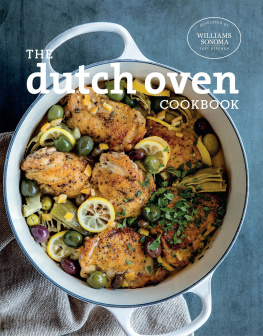
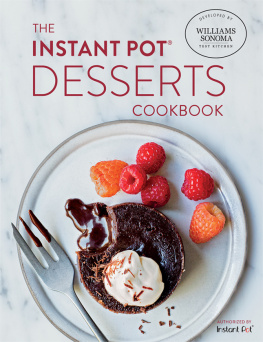
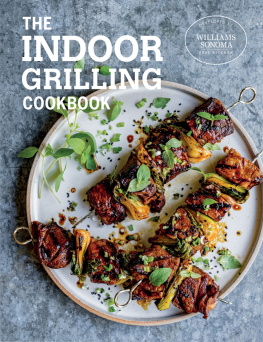
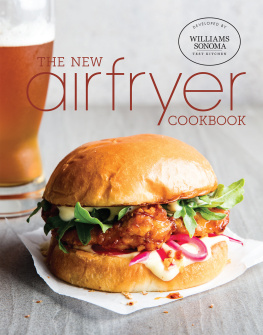
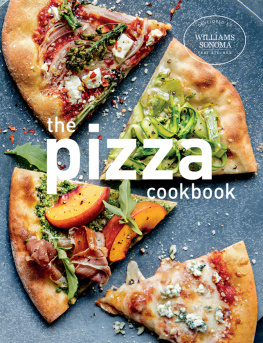
![Odette Williams - Simple Pasta: Pasta Made Easy. Life Made Better. [A Cookbook]](/uploads/posts/book/320732/thumbs/odette-williams-simple-pasta-pasta-made-easy.jpg)
